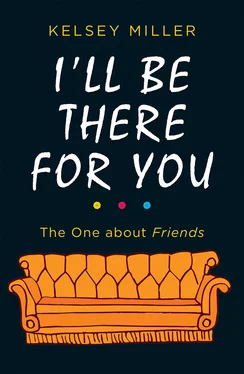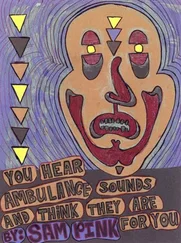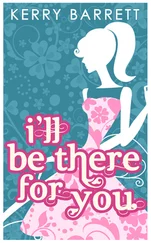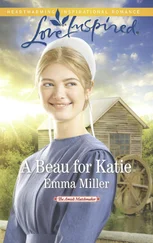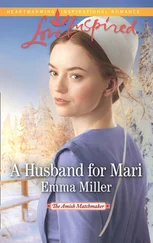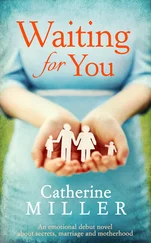It was the third of three key events in their early professional partnership—the one that made them pack up and leave their lives in New York, to try this TV thing, for real. The first was simply meeting Josephson, and agreeing to her suggestion that they give TV a shot. (When later asked about her role in their career, Josephson took no more or less credit than she was due: “I saw the play and thought they should work in TV. I guess I was right about that.”)
The second moment happened after Josephson told them it was time to formalize their writing team. By then, Kauffman and Crane were doing some work as a pair, and some as a trio, with their friend Seth Friedman, who had cowritten Personals . Then Josephson brought them a potential gig working on a screenplay. It would turn out to be just another script that never got produced, but the nameless project became a turning point, nonetheless. As Josephson was finalizing the deal, she told Kauffman and Crane they had to decide whether or not they would do this job with Friedman, or work together as a pair. If this was a partnership, it was time to make it official, once and for all. They had twenty-four hours to make the call.
That evening, Kauffman found herself in a taxicab, inching her way home through the driving rain. A sign, she thought. “And I sit up, and I look at the license of the cabdriver. And his name was David Yu.” That was it, as far as she was concerned. From then on, it was David and Marta. They were partners. And soon they were off to LA together, for good.
“The meeting that you think is not going to yield anything is the one that’s going to change your life.” When asked for his advice to aspiring TV writers, this was David Crane’s reply. “If success should happen, you have no idea how it’s going to happen.” He and Kauffman were brought into the television world because of their exceptional creative and story-crafting abilities. They then spent years ideating, pitching, maybe selling but never producing, and heading back to the drawing board, hoping the next one would be a hit. In other words, they were following the traditional path toward (fingers crossed) success. But in the end, success turned up in an unexpected detour from that path. It wasn’t one of those myriad pitch meetings that got Kauffman and Crane their big break. It was simply the fact Universal Studios had a bunch of old black-and-white TV shows lying around, and was looking for a way to make money off them.
The way the story goes, in the late 1980s, director/producer John Landis had a bungalow on the Universal lot. He hadn’t had a hit in a couple years, and so studio chief Sid Scheinberg charged him with the task of coming up with a show using Universal’s enormous anthology of midcentury television footage. As Kauffman recalled, they’d brought in “thousands” of writers to invent series ideas around this archival material. Game shows, Mystery Science Theater –style shows, and none of it had worked. By the time they reached out to Kauffman and Crane, she said, “they were scraping the bottom of the barrel, talking to two musical-theater writers.” They were in Los Angeles, about to fly home to New York after wrapping up yet another fruitless pitch meeting, when Josephson called and asked if they could squeeze in one more before going to the airport. As Crane recalled, “We went in, and they showed us six minutes of black-and-white clips and said, ‘What would you do?’ And we said, ‘We have absolutely no idea.’” Another flop, but, oh, well. Every other writer in town had flopped, too, and anyway, this meeting was little more than a pit stop on the way to the airport. They got on the plane, took off, and that’s when something occurred to them. “By the time we got off the plane, we had an idea,” said Crane. It wasn’t even a pitch, but just a vague concept about a guy who’d grown up watching old TV shows, which popped into his head like funny little thought bubbles. Or something like that. They got home, dropped their bags, and called the studio. “And they said, ‘Come back.’”
Kauffman and Crane’s airplane pitch would become Dream On , a cult HBO comedy series about a divorced father who, like so many of his generation, had been raised in front of the television. In each episode, his fantasies and thoughts appeared, literally, on-screen, via clips from his favorite childhood TV shows. Airing from 1990 to 1996, Dream On was a quirky mix of nostalgia and humor. Most importantly, it was, as the critics put it, “adult.”
Dream On was one of HBO’s first forays into scripted series, debuting at a time when premium cable was stuck in a dangerous rut. The draw of these channels was the luxury of being able to watch feature films at home, without commercial interruption. Since launching in 1972, HBO had been on a steady, exponential rise. “But then the bubble burst,” the Los Angeles Times reported. VCRs, pay-per-view, and new basic-cable movie channels like TNT and AMC were now incentivizing viewers to ditch pricey premium subscriptions. In 1990, HBO’s customer base grew by only 1.8%, with 4.5% of existing subscribers canceling every month. In creating original programming, HBO couldn’t just deliver a show that was good. If they wanted to survive, they had to give people something they couldn’t get on network television. Two things, really: sex and swearing. Kauffman and Crane turned in their first draft to Executive Producer John Landis, who sent it back with two notes: “It needs to be funnier, [and] it needs to be dirtier.”
Other than that, Kauffman and Crane could pretty much call the shots. They had zero experience and total creative authority. They were thrilled, but panicked, and rightfully so. Shortly before beginning production, recalled Crane: “We were actually talking to a couple writer friends, going, ‘Okay, so you hire writers…and then you sit around talking about what the episodes could be? And then does someone go off and write it? Or do you write it as a group?’” The general feedback from their fellow writer friends was something along the lines of “I hate you.”
So they winged it. They had a staff of three writers and a warehouse in North Hollywood, where they whipped up a show that they thought was funny, and hoped everyone else would, too. In the end, they didn’t win over everyone, but more than enough. Dream On was HBO’s first definitive hit, as well as Kauffman and Crane’s, though today its legacy has been largely lost in the shuffle. Watching it now, it feels very much like a relic of its time: one part a standard story of a divorced dad muddling through middle age, and the other part a naughty cable show, where everyone swears like a sailor and walks around with their nipples out. But look beyond the titillation and it’s a quiet triumph.
Dream On was often mixed with the critics; the most typical complaint was that the language and sexuality seemed a little too deliberate, which, of course, it was. But it was a solid success, and signaled a sea change for premium cable, and for HBO in particular. Dream On was quickly followed by shows that further cracked the mold of traditional television formats, allowing for both sophisticated and oddball comedy, nuanced and polarizing drama, and the kind of stories that simply didn’t sell before, because no one knew if an audience would buy them. It proved that television didn’t have to cast the widest net possible in order to be successful. A show could be smart and specific and sellable, all at the same time.
Dream On is not often mentioned alongside those other early series— The Larry Sanders Show , Oz , The Sopranos , Sex and the City —which would come to define HBO as a leader in innovative, high-quality entertainment. Indeed, it doesn’t belong on the same list as those series. But there is no doubt that Dream On was the launch pad for them all. In the wake of all the behemoth successes that came after it, Dream On has faded into relative obscurity—an artifact from an era when it was still risqué to drop an F -bomb or display two whole butt cheeks in the same frame. But without it, there would be no Sex and the City , and almost certainly no Friends .
Читать дальше
